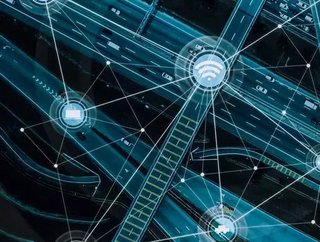Omnipresent connectivity to trend in 2021

Never in recent history has stable and pervasive connectivity been so essential to the continued operations of enterprises and the daily lives of consumers. COVID-19 has driven a drastic uptick in remote working, video conferencing and requires high-speed data download facilities to share information. The continuation of commercial activity also requires these services to be available 100% of the time.
As the demand for international connectivity grows, companies are responding to users by offering solutions that give unmatched levels of coverage. These solutions even eliminate the need for fixed electricity or WiFi sources. Being able to deliver connectivity in remote locations is an expectation too. Ultimately, consumers need wide-spread, fast coverage, and increasingly reliable tech options.
According to Erik Ekudden, Senior Vice President, CTO for Ericsson, all this and more will be possible very soon. Telecom companies are fighting for customers, attracting business through their ultramodern tech and providing users with the best services.
However, providing these services requires extensive rethinking and rebuilding of current systems. Ekuddin points out that complete radio access will be the goal. He says, “The concept of ubiquitous radio access is evolving toward the vision of a future network that will deliver non-limiting performance to satisfy the needs of humans, things and machines by enhancing multidimensional coverage, stellar capacity and augmenting capabilities.”
Universal coverage
The concept of complete global coverage, where all spots of the earth have connectivity to mobile networks and the Internet, requires the densification of current networks. This will enable them to provide far more widespread high-speed coverage. Referring to recent piloting of airborne mobile network platforms, Ekudden says elevation is key in creating universal coverage.
He explains, “Connected airborne devices, such as drones, require access on altitudes up to several kilometers, making it necessary to have a 3D point of view including the elevation aspect to provide coverage. There is also a need to ensure high-performing indoor connectivity by increasing the number of indoor small cells and fully integrating them.”
Flexible network topologies and deployments will also be essential in providing broad coverage delivering fast performance. But technology is swiftly answering our needs, he continues. “One possibility is a multi-hop-based radio network, where a multitude of nodes collaborate to forward a message to the receiver. This solution is particularly interesting for smaller cells of limited reach. Satellites, high-altitude platforms and airborne cells can be integrated into the network as a complement to extend coverage.”
Zero energy tech
As efficiency and connectivity requirements increase, developers are busy innovating zero-energy devices that can be added to networks and act as sensors and actuators. These can report continuously without charging or maintenance. Major steps in the IoT industry include narrowband IoT improvements and better machine type communication. These will be used for 5G implementations in the local area and wide area capacities.
The demand for omnipresent and continuous communication services is also forcing networks to use higher frequency bands to deliver advanced performance. Ekudden explains, “For example, communications over the terahertz frequency band (above 100GHz) have some attractive properties, including terabit-per-second link capacities and miniature transceivers.”
Ultimately, 5G services will revolutionise our connectivity – and not before time. Though some projects have been put on hold due to COVID-19, many globe-wide implementations of 5g are still going ahead. And as our current networks face ever more demanding usage, that’s a very good thing.
Every 60 seconds globally, approximately 4mn videos are viewed on YouTube, 2mn Snapchats are sent, and 50,000 photos are posted on Instagram. And that is just a tiny slice of the demands our networks are facing.






